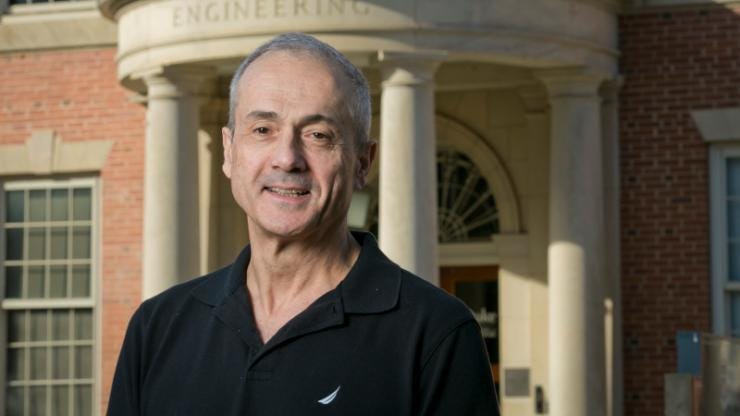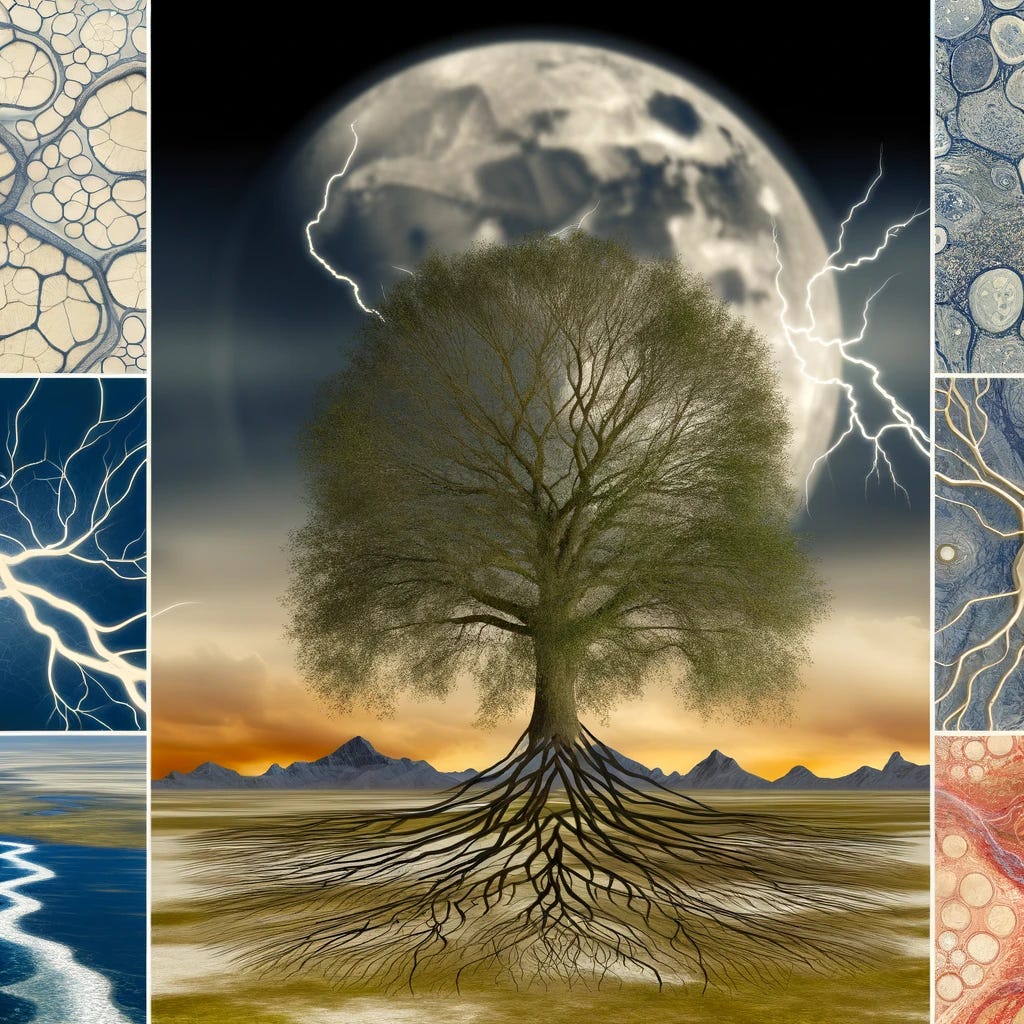The Genesis of Constructal Theory
A new law of physics and life was born when a young Romanian professor dared to disagree with Ilya Prigogine.
Life is a series of natural and spontaneous changes. Don't resist them—that only creates sorrow. Let reality be reality. Let things flow naturally forward in whatever way they like.
—Lao Tzu
In 1989, the same year the Romanian people forcibly removed dictator Nikolai Ceauşescu from power, Adrian Bejan became a distinguished professor at Duke University in North Carolina. He had not yet articulated what would become the defining theory of his career, but—in some sense—he already knew it in his bones.
Bejan remembers his childhood in Romania as a time when shortages were common. Under communism, things didn’t flow very well. Black markets formed like dark rivulets where state authorities could not supply what people demanded. Information was restricted, too, so people smuggled in books, magazines, and records. The Internet was still the stuff of science fiction.
In the middle of the Cold War, when meat began to disappear from Romanian store shelves, Bejan’s father, a veterinarian, started hatching chickens. He had a light box that illuminated the inside of the egg so he could make sure the embryo was developing properly.

“As a teenager, I stared in awe and wonder at the growth that unrolled before my eyes each day, as the vasculature grew and spread tightly on the inside surface of the shell,” Bejan said.
I also noticed that the design I was seeing was the same as that of the river basins on the colored maps I was drawing in school. Where the chicken embryo was evolving on the inside of the sphere, the Danube basin had evolved on the outside of the spherical earth.
These memories formed the Proustian bases of what became constructal theory, an idea so powerful that, once you grok it, you see it everywhere.
Constructal theory sounds highfalutin, but the idea is this: Systems survive when things flow better—all kinds of systems, from natural systems to human systems—and when things flow better, we start to notice patterns in nature that are products of good flow.
“The élan that constructal theory has generated in science is […] contagious,” Bejan said, “and the theory itself so commonsense, concise, and useful that it deserves to be discussed more broadly with colleagues from totally unsuspecting fields.”
The young Bejan landed at MIT—scholarship in hand—in 1969. He was a math wiz, but his English was only passable. He also arrived in the United States during one of American history's most decadent times. The contrasts with his homeland were profound. He left the austerity of the Eastern Bloc to discover a dizzying array of products and services. This abundance must have affected him, too.
Between arriving in 1969 and expressing the constructal law in 1996, Professor Bejan improved his English, completed a Ph.D. in mechanical engineering, and landed a professorship at Duke. It took scores more publications and another decade before he found himself in Nancy, France, in the audience for a talk by the eminent physical chemist Ilya Prigogine.
Uncomfortably, Bejan found himself disagreeing with the Nobel laureate. For those “in the know,” Ilya Prigogine walks on water. He is the godfather of complex systems theory and the giant on whose shoulders many of today’s greatest thinkers and scientists stand.
Echoing the scientific community’s conventional wisdom, this famous man asserted that the tree-shaped structures that abound in nature—including river basins and deltas, the air passages in our lungs, and lightning bolts—were aléatoires (the result of throwing the dice). That is, there is nothing underlying their similar design. It’s just a cosmic coincidence.
When he made that statement, something clicked. The penny dropped. I knew that Prigogine, and everyone else, was wrong. They weren’t blind; the similarities among these treelike structures are clear to the naked eye. What they couldn’t see was the scientific principle that governs the design of these diverse phenomena. In a flash, I realized that the world was not formed by random accidents, chance, and fate but that behind the dizzying diversity is a seamless stream of predictable patterns.
In that moment, the constructal law was born.
On the plane back to Durham, Adrian Bejan wrote:
For a finite-size (flow) system to persist in time (to live), its configuration must evolve such that it provides easier and easier access to its currents.
This principle—the core of Adrian Bejan’s work—explains a great deal about the movement of capital and resources throughout an economy. But we’ll return to that point in another article.
Fractals, Rules, and Complexity
My roommate in college used to write Mandelbrot fractals on his old PC. One day in 1994, he took LSD and watched a fractal for hours. I’d done a lot of things in my life, but never LSD. Still, I watched with him. I didn’t need acid to be moved by the fractal images. Its tendrils, fronds, and spirals inspired me and set me on a journey. Fractals are just equations, of course, and fractal images are just representations of those equations. There is no magic to it. But when you visualize the geometry, it seems you’ve somehow gained access to God’s code.
For those who have never heard of a fractal, just look around you. From the repeating forks of veins in leaves to the spiraling chambers of the ancient nautilus, we take fractals for granted. Recursion is everywhere. Simple geometric shapes repeat themselves without end, giving rise to complex configurations. You can find these shapes everywhere in nature. Using a computer, you can create mountainous landscapes, artificial plants, or hallucinatory river systems that mimic the real thing. You can zoom into these images almost infinitely. Follow one fractal river delta, and another opens up. Zoom in on a rivulet and discover a whole new environment with its own river basin—all in Technicolor.
After that, I started seeing fractals everywhere. Before my roommate, I didn’t even know who Benoit Mandelbrot was. But these beautiful forms had opened my mind to a new realm of possibilities. Armed with a new interest in fractals, I began to explore chaotic systems and complexity theory.
The roots lie in complex mathematical equations involving imaginary numbers, but the rules are easy to understand.
First, two concepts: emergence and complexity. Emergence is the way new patterns arise out of an abundance of relatively simple interactions among lower-order elements in a system. Complexity is the extent to which any higher-order patterns are greater than the sum of the elements (and can be studied at that higher level). Examples of complex systems include bee hives, an animal’s nervous system, an organism, an economy, and a galaxy.
I took five basic lessons with me from my contact with these fields:
System Rules. When it comes to any emergent system, the rules matter. Without rules, there can be no system, much less emergence. Change the rules and the system changes with it.
Simple Rules. You need relatively simple rules to get complex systems. The more complicated the rules, the less likely you will see emergence. Simple rules are better because the elements or “agents” in a system are usually too dumb (or it’s too costly) to follow complicated rules.
Bottom Up. Emergent systems need neither a designer nor a central authority. These complex orders require only that the system elements—whether bees, slime molds, or people—behave according to specific rulesets. The system emerges from the rule-oriented behavior of the elements.
Ordered Chaos. Self-organizing systems are robust. They are not perfect, but because they are greater than the sums of their parts, “the wonderful possibility to be held as a working hypothesis, bold but fragile, is that on many fronts, life evolves toward a regime that is poised between order and chaos,” writes theoretical biologist Stuart Kauffman. We find profound diversity when we find those systems in the sweet spot between rigid order and chaos. And we find good rules.
Butterfly Effect. Small changes in initial conditions can mean big, unpredictable changes elsewhere in a system. This came to be known as the butterfly effect. “I realized,” said Edward Lorenz, the meteorologist who discovered ordered chaos in his work, “that any physical system that behaved non-periodically would be unpredictable.”
With these basic lessons in tow, I sallied forth.
Élan Vital?
But a question lingered in my mind. Why the similarities “on many fronts?” I knew there was a reason, which had to do with self-organization and rules, but that half-formed answer lacked something. I felt a whole answer lay in what you might call an élan vital—an animating force. Most after Darwin have scoffed at the idea of such a force, much less an animator that sets it in motion.
But why does a nautilus shell express a Fibonacci sequence or “golden ratio?” What does this have to do with the fractals in trees' leaves? How do socio-economic phenomena display fractal-like patterns under certain conditions? Why do complex social orders arise from simple rules?
Despite picking on the very idea of élan vital, evolutionary humanist Julian Huxley had a similar nagging suspicion when he wrote:
When I was just last in New York, I went for a walk, leaving Fifth Avenue and the Business section behind me, into the crowded streets near the Bowery. And while I was there, I had a sudden feeling of relief and confidence. There was [philosopher Henri] Bergson’s élan vital—there was assimilation causing life to exert as much pressure, though embodied here in the shape of men, as it has ever done in the earliest year of evolution: there was the driving force of progress.
Huxley was getting close.
The idea of “pressure” as the “driving force of progress” is not the stuff of literary whimsy or mere metaphor.
It was constructal thinking.
Stay tuned as I continue this series on the constructal law.





Indeed. Romanians understand the hunger for freedom — Bejan included. In my last correspondence, he referred to time, beauty, and freedom as the “intangibles” that connect with physics.
Max, Excellent piece on one of the great discoveries of our lifetimes. The CL reveals - because scientific laws are summaries of observations - that the universe does not play dice; it is not random; predictable patter (design) is everywhere. One you learn the law, you see it everywhere (because it's the law!); or, you finally have the scientific language to describe what you have long observed.